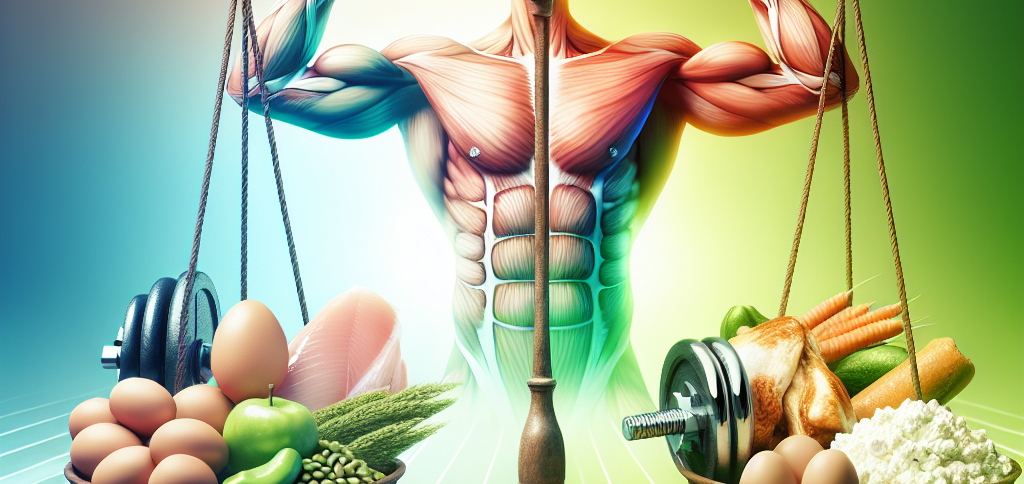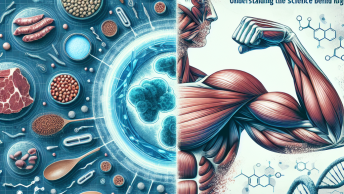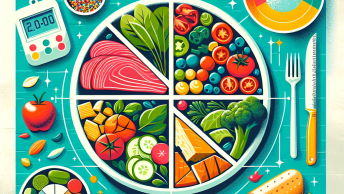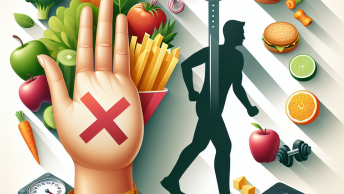The Ultimate Guide to a High-Protein Diet for Fat Loss
When it comes to losing fat, the strategies you adopt can make a world of difference. One of the most prevalent and effective methods is a high-protein diet. Many people are turning to protein-packed foods to help them achieve their weight loss goals. In this article, we will explore various aspects of a high-protein diet that can lead to successful fat loss. Let’s dive into this informative listicle!
1. Understanding Protein’s Role in Fat Loss
Protein is an essential macronutrient that supports muscle growth, repair, and overall body function. It plays a critical role in a high-protein diet by:
- Increasing Satiety: Protein can help you feel fuller for longer, reducing the chances of overeating.
- Boosting Metabolism: The thermic effect of food (TEF) is higher for protein than for fats or carbohydrates, meaning it takes more energy for your body to process protein.
- Preserving Muscle Mass: When you’re in a calorie deficit, a high protein intake helps prevent muscle loss, which is crucial for maintaining a healthy metabolism.
2. Setting Your Protein Intake
To effectively use protein for fat loss, you’ll need to determine the appropriate amount for your body:
- General Recommendation: Aim for 1.2 to 2.2 grams of protein per kilogram of body weight, depending on your activity level and goals.
- Personalization: Calculate your needs based on factors like age, sex, muscle mass, and daily activity level. Consult a nutritionist for tailored advice.
3. Choosing the Right Protein Sources
Not all proteins are created equal. Selecting high-quality sources can significantly impact your diet. Here are some excellent options:
-
Animal-Based Proteins:
- Lean meats: Chicken, turkey, and lean cuts of beef are great sources.
- Fish: Salmon, tuna, and trout are packed with omega-3 fatty acids, which are beneficial for overall health.
- Dairy: Greek yogurt, cottage cheese, and low-fat milk provide protein and calcium.
- Plant-Based Proteins:
- Legumes: Lentils, chickpeas, and beans are rich in protein and also provide fiber.
- Nuts and Seeds: Almonds, chia seeds, and hemp seeds are great choices that offer healthy fats alongside protein.
- Whole Grains: Quinoa, barley, and oats not only provide protein but also essential nutrients.
4. Meal Planning for Optimal Protein Intake
To ensure you’re meeting your protein goals, planning your meals is crucial. Here are some suggestions:
- Breakfast: Start your day with a protein-rich breakfast. Options include scrambled eggs with spinach or Greek yogurt topped with berries and nuts.
- Lunch: Incorporate lean protein into your lunches—think grilled chicken salads or quinoa bowls with black beans.
- Snacks: Choose high-protein snacks like hard-boiled eggs, beef jerky, or hummus with vegetables.
- Dinner: Create balanced dinners; for example, baked salmon with sweet potatoes and broccoli.
5. The Power of Protein Supplements
Sometimes it can be challenging to meet your protein needs through food alone. This is where protein supplements come into play.
- Protein Powders: Whey protein, casein, or plant-based protein powders can help you reach your protein goals easily.
- Protein Bars: Convenient and tasty options for on-the-go snacking, but read labels to ensure they are low in sugars.
To further enhance your journey towards fat loss, consider exploring detailed resources on optimal high-protein diets. Click Here to learn more about the best strategies tailored for your needs.
6. Balancing Your Macronutrients
While high protein is beneficial, it’s essential to balance your macros for overall health:
- Healthy Fats: Do not shy away from healthy fats; they are important for hormone production and satiety. Avocados, olive oil, and nuts are great additions.
- Complex Carbohydrates: Include whole grains, fruits, and vegetables to provide energy for workouts and overall health.
7. Tracking Your Progress
Monitoring your progress is vital when following a high-protein diet for fat loss:
- Keep a Food Diary: Track your daily food intake to ensure you meet your protein and calorie goals.
- Regular Weigh-ins: Use the scale as one of many metrics to assess your body composition changes.
- Adjust as Needed: If after four weeks you don’t see progress, consider adjusting your protein intake or overall calories.
8. Overcoming Common Challenges
Implementing a high-protein diet may come with obstacles. Here are tips to tackle common issues:
- Boredom: Mix up your protein sources and try new recipes.
- Cost: Buy in bulk or choose less expensive protein sources, such as canned tuna or legumes.
- Social Situations: Plan ahead; consider bringing your own high-protein snacks to gatherings and choose wisely from the menu when eating out.
9. The Bottom Line: Sustainability is Key
Adopting a high-protein diet for fat loss can be highly effective, but sustainability is essential. Focus on creating healthy habits rather than simply following a restrictive diet. Gradual changes lead to lasting results.
10. Consult Professionals
Before making significant changes to your diet, it may be beneficial to consult with a healthcare professional or a registered dietitian. They can provide personalized recommendations tailored to your unique health needs and goals.
Conclusion
A high-protein diet can be a powerful tool in your fat loss journey. By understanding protein’s role, choosing the right sources, meal planning, and tracking your progress, you can maximize your results. Always remember to make sustainable choices that suit your lifestyle. Now that you’re equipped with essential knowledge about high-protein diets, you can confidently embark on your path to a healthier you!






